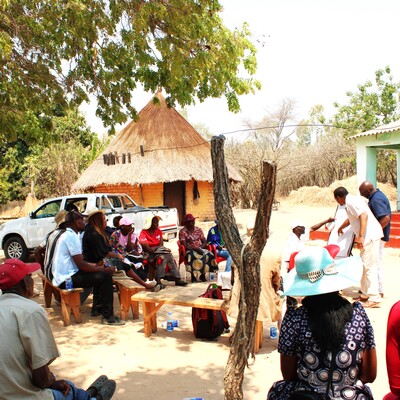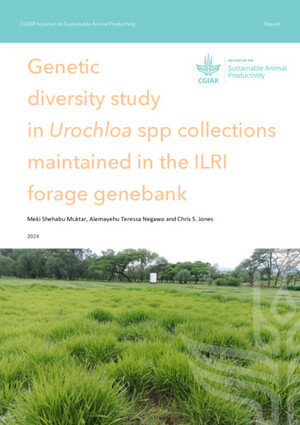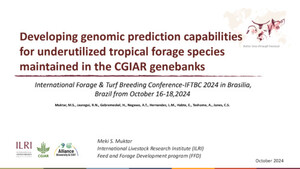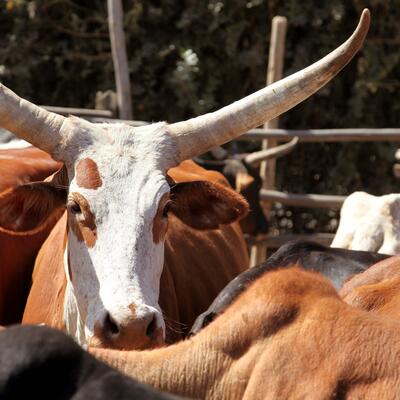
Desho grass (Pennisetum pedicellatum), a feed resource for mid and high altitude regions of Ethiopia

A farmer cares for his desho grass
In June 2016, Bimrew Asmare graduated from Jimma University, Ethiopia with a PhD in Animal Nutrition. He investigated the agronomic, utilization, nutritive and feeding value of desho grass (Pennisetum pedicellatum) in North-western and Southern Ethiopia.
The study comprised of a field survey, agronomic trials, laboratory and animal evaluation of desho grass. A total of 240 households were involved in the field survey conducted to assess the status of desho grass production and utilization.
Agronomic studies were conducted in mid and highland altitudes using vegetative root splits in randomized complete block designs to determine the effects of altitude and harvesting dates (90, 120 and 150 days after planting) on morphology, dry matter (DM) yield and chemical composition of desho grass.
Feeding and digestibility trials were conducted using 25 Washera yearling rams with mean body weight of 19.4+1.89 kg in randomized complete block designs to evaluate the feeding value of desho grass as a basal diet. Agronomic results revealed that desho grass performs well in mid and high altitude areas and is a potential livestock feed resource during early stages (90 to 120 days after planting).
The daily DM intake and mean daily body gain of experimental sheep showed significant improvement (P<0.05) with increased level of inclusion of desho grass into the basal ration. The results of the feeding trial indicated that desho grass hay can substitute natural pasture hay at 50-100% in small ruminant basal rations.
Desho grass is multipurpose (feed, soil conservation, income generation) and is appropriate for smallholder farming systems of Ethiopia.
Outputs from the study include:
- Asmare, B. 2016. Evaluation of the agronomic, utilization, nutritive and feeding value of desho grass (Pennisetum pedicellatum). PhD thesis in Animal Nutrition. Jimma Ethiopia: Jimma University. http://hdl.handle.net/10568/77741
- Asmare, B., Demeke, S., Tolemariam, T., Tegegne, F., Wamatu, J., Rischkowsky, B. 2016. Determinants of the utilization of desho grass (Pennisetum pedicellatum) by farmers in Ethiopia. Tropical Grasslands 4(2):112–121. https://dx.doi.org/10.17138/TGFT(4)112-121
- Asmare, B., Demeke, S., Tolemariam, T., Tegegne, F., Wamatu, J. and Rischkowsky, B. 2016. Evaluation of desho grass (Pennisetum pedicellatum) hay as a basal diet for growing local sheep in Ethiopia. Tropical Animal Health and Production 48(4): 801-806. https://dx.doi.org/10.1007/s11250-016-1031-8.
This research was partially sponsored by the CGIAR Livestock and Fish research program.
Story by Jane Wamatu (ICARDA)


















